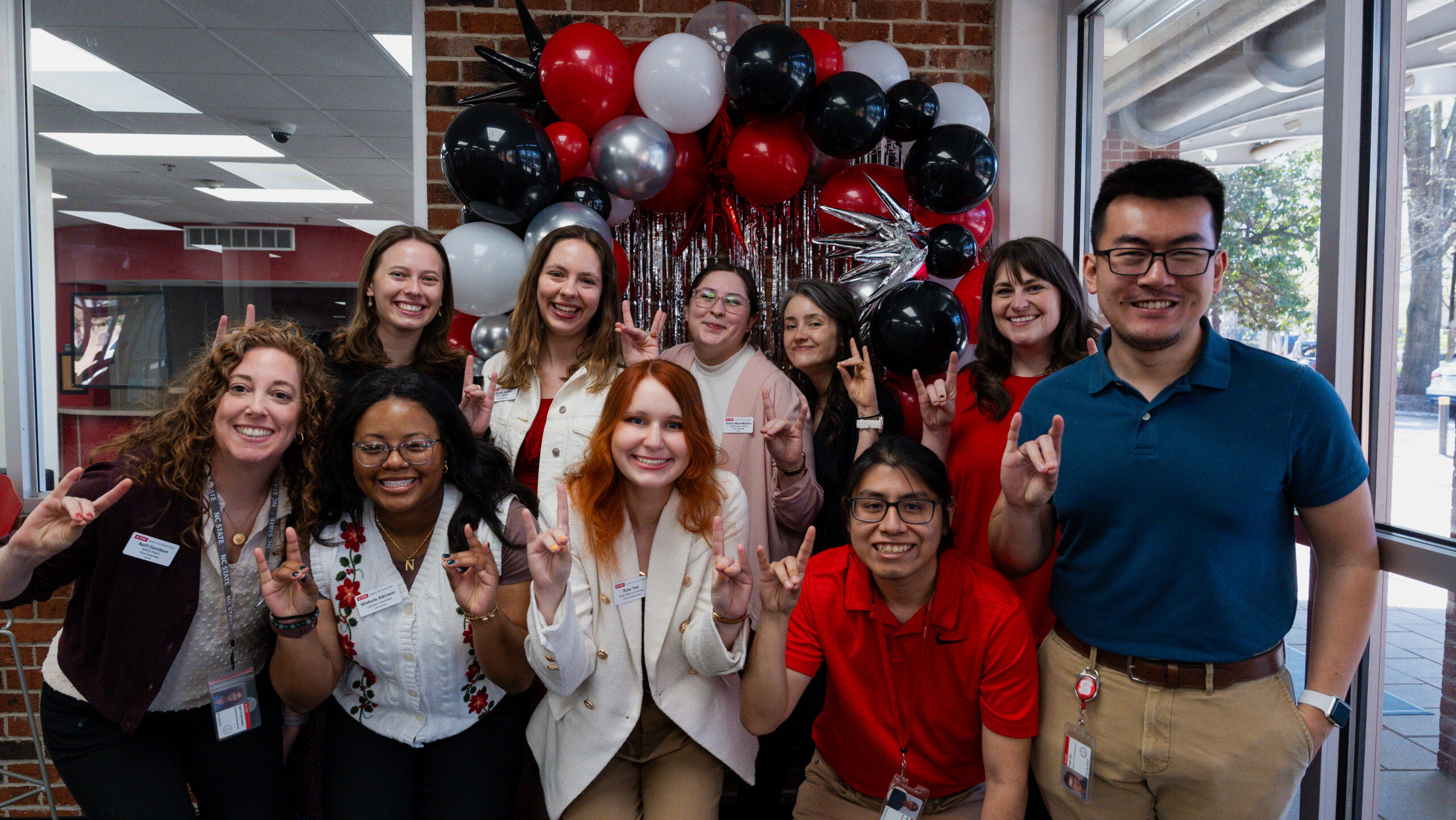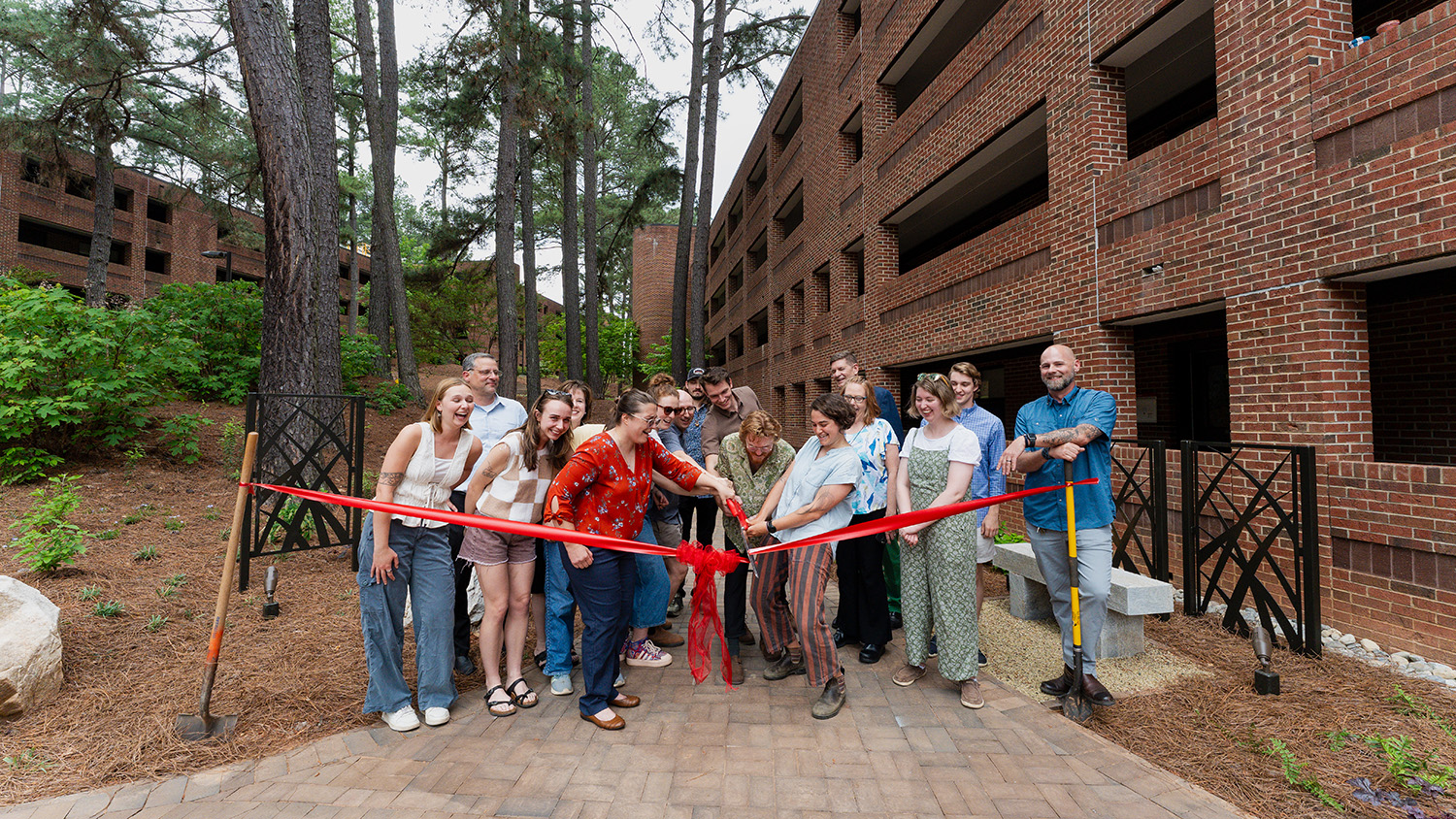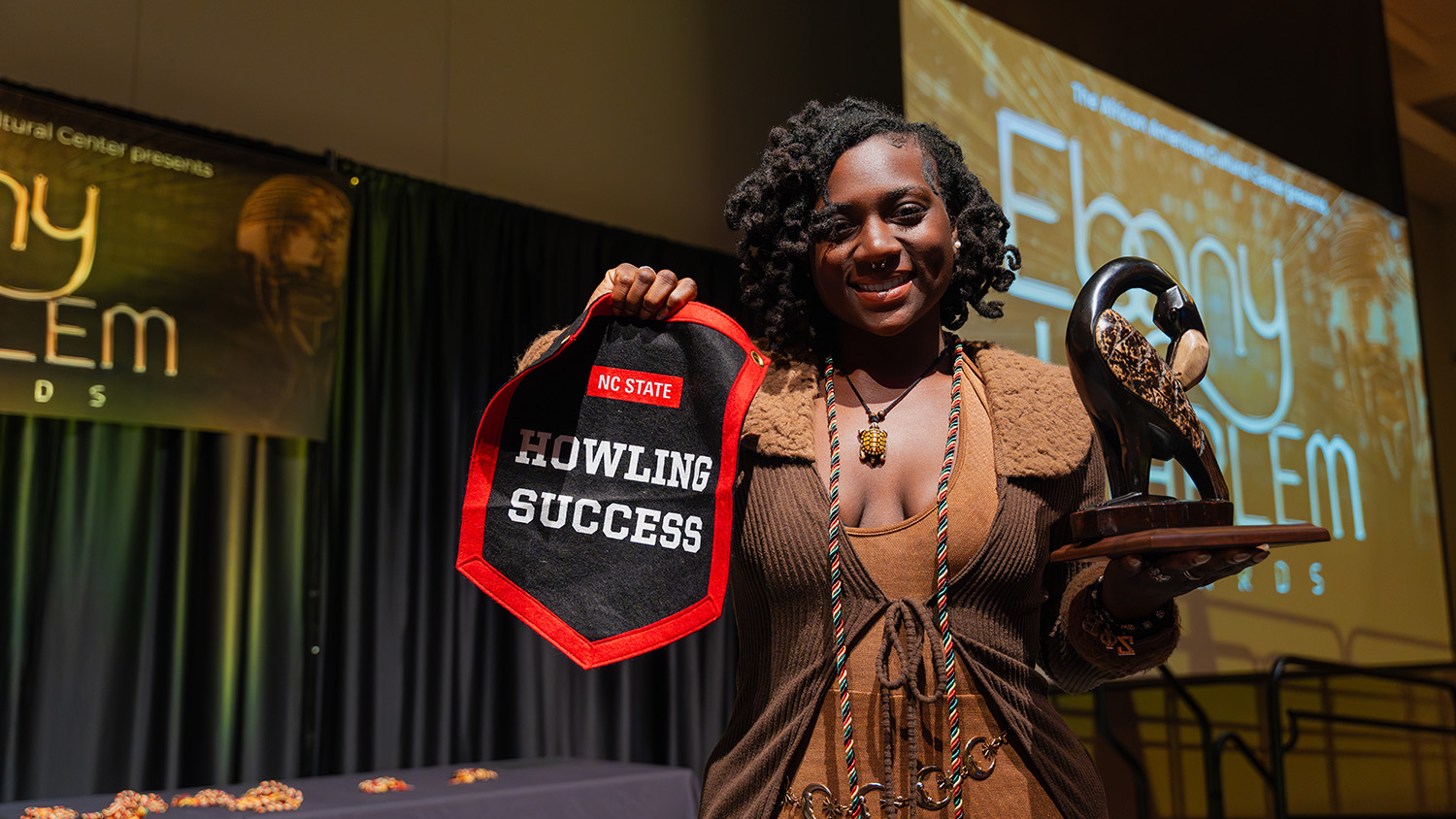Envisioning Research Undergrad Winners Bring Work to Life
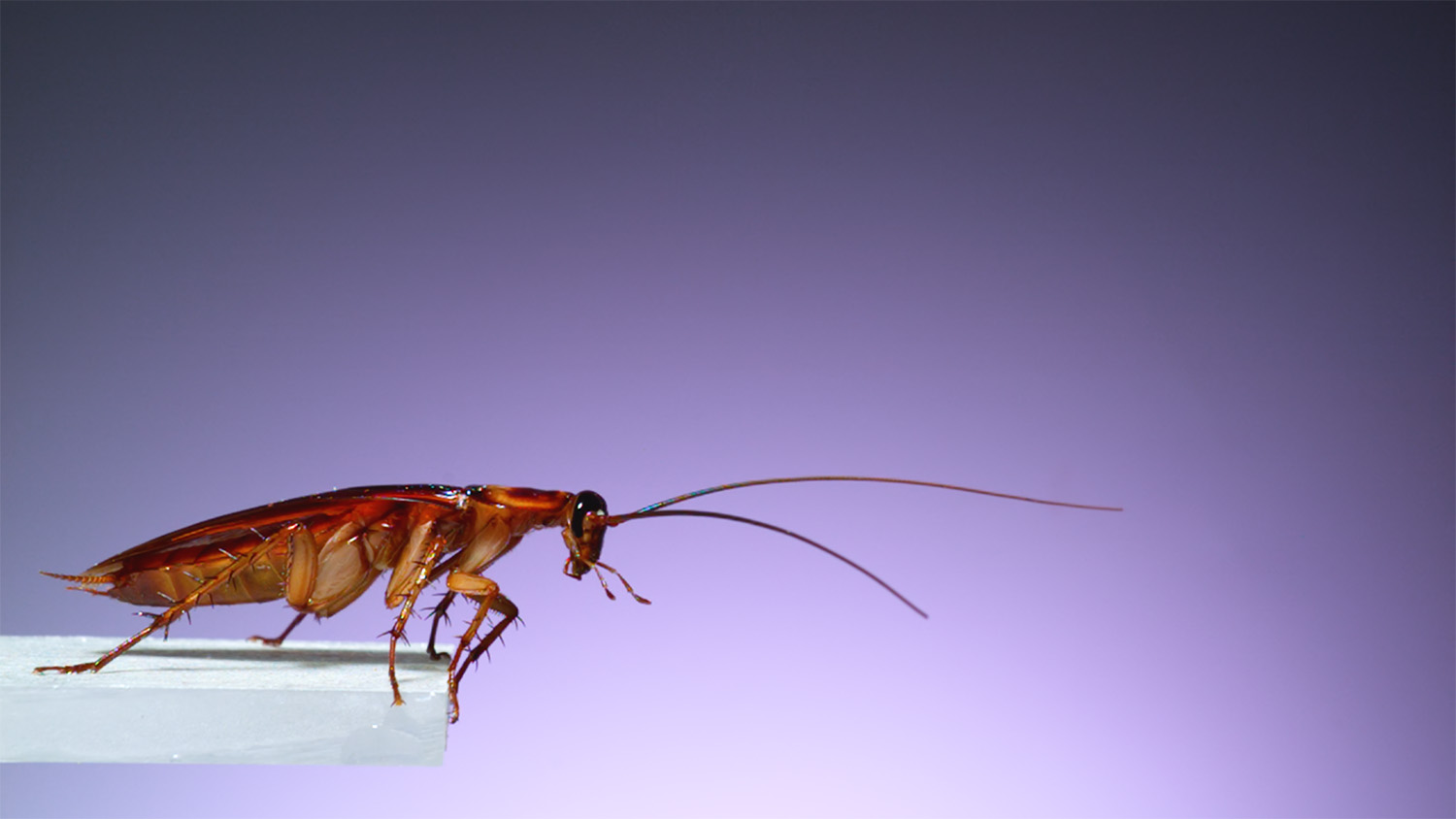
A cockroach preparing to jump off an elevated surface. A seismic design tower structure. A segmented marine worm. A colorful, mutated genetic structure. A closeup shot of mildew.
All of these images might involve feelings of wonder, awe and curiosity when first viewed. What the viewer might not immediately realize, however, is that all of these images are representative of important research being conducted by students through NC State’s Office of Undergraduate Research.
It’s also award-winning research. Each image was awarded either first place, second place or honorable mention in the Undergraduate Photography and Microscopy categories of NC State’s Envisioning Research contest.
“It’s exciting to see the hard work of these students being celebrated alongside graduate students, faculty and staff across the campus,” said Janet Goins, the OUR’s director. “They haven’t just excelled in their research pursuits; they created pieces of art to communicate this research to a broader audience, inviting people to learn more. This is a vital step of research – communicating beyond your field and getting others excited about your work too. The Office of Undergraduate Research could not be more proud of their accomplishments and I hope other students are inspired to participate in this contest in the future and to explore creative ways to showcase their work.”
This annual contest allows undergraduate students, graduate students, faculty and staff to submit images that capture their research topics.
Photography
Nicolás Galvez, a fourth-year student in the College of Sciences, took home first place in the undergraduate photography category for his image of a cockroach preparing to jump, with the caption “cockroaches are a familiar household encounter, and anyone who has found one in their home is probably well aware of how fast a roach can move. In this study, roaches are placed on a small platform in front of a video camera. When shone on by a bright light, the roaches jump off, searching for a darker location. The jumping footage is then analyzed for data, such as how fast they jump and how they move their legs.”
Galvez explained that this research into how cockroaches jump and move their legs could be vital to the medical field, potentially enabling the design of improved prosthetics or robotics.
“Photography is one of the many mediums I use to communicate the beauty and wonder I find in the natural world to others,” Galvez said. “Winning this year’s competition gives me courage to keep pushing my skills and to continue pursuing the perfect shot!”
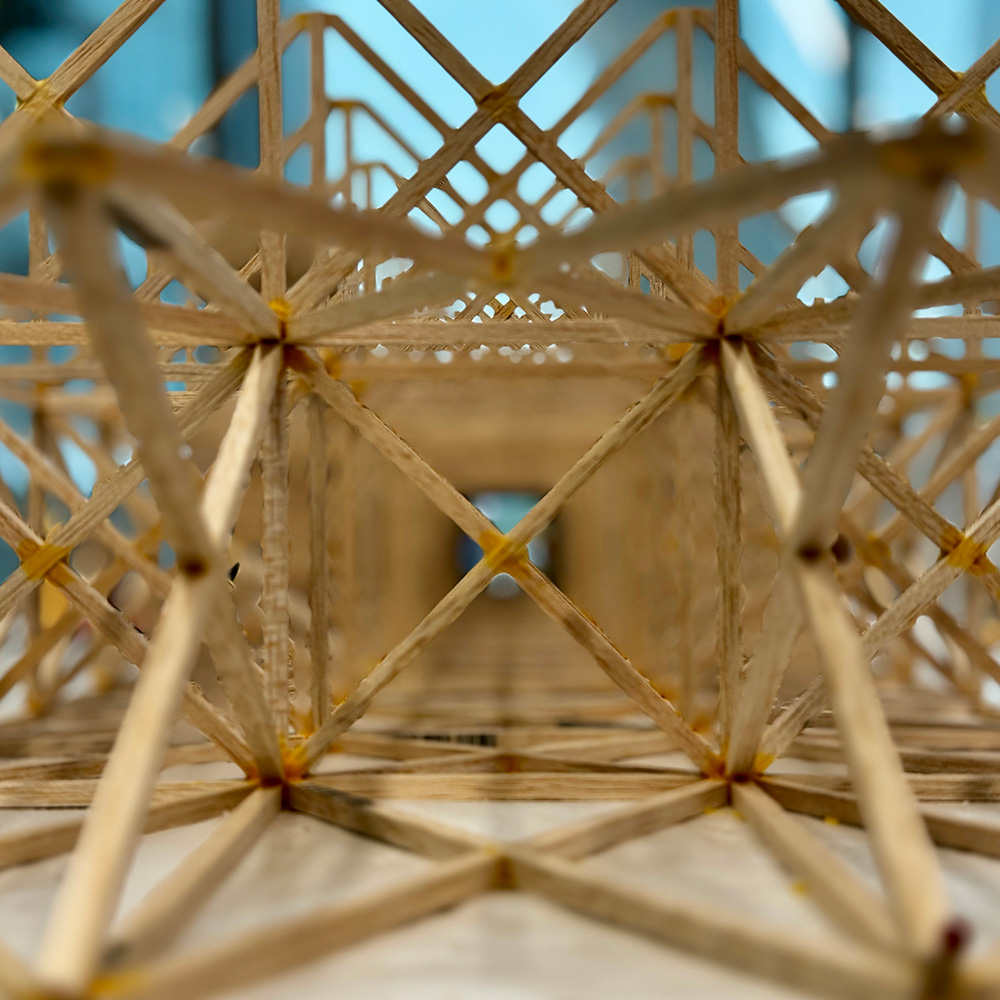
Taking home second place was Emily Boldor, a fourth-year engineering student, with her image of a seismic design structure, captioned “built to bring to the 2024 International Seismic Design Competition, the tower was meticulously modeled in computer software before construction began. Our team tested a variety of designs and then constructed the tower out of balsa wood, a very lightweight material.”
This research allows for greater knowledge of how to construct earthquake-resistant buildings in high-risk areas.
“Winning this award has only encouraged me to further pursue undergraduate research,” Boldor said. “I hope to encourage other students to photograph their research if they are able to.”
Microscopy
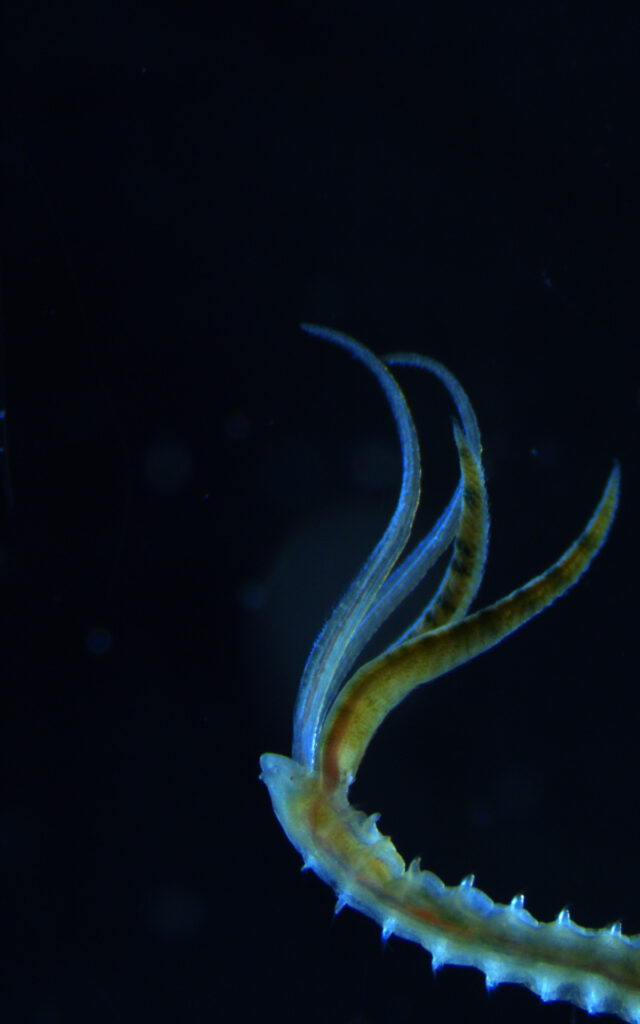
Zachary Benfield, a fourth-year College of Sciences student, took home the gold in the undergraduate microscopy category with an image of mature Streblospio benedicti headgear, which they described as “the anterior portion of a mature Streblospio benedicti, which is a segmented worm that lives in marine ecosystems, under a microscope. This tiny worm is a bioindicator species that can be found in estuaries, including those here in North Carolina.”
These organisms play an important role in ecosystems, as they can signal when the system becomes disturbed or polluted, and have two different modes of larval development, allowing researchers to study the tradeoffs of genetic traits in either mode.
“Winning this award means so much to me,” Benfield said. “I spent a lot of time conducting research this summer with my mentor, Robert Walsmith, and it’s always great when your hard work pays off. More importantly, though, I am excited that people may be introduced to this microscopic worm species that I spend so much of my time with after seeing my picture!”
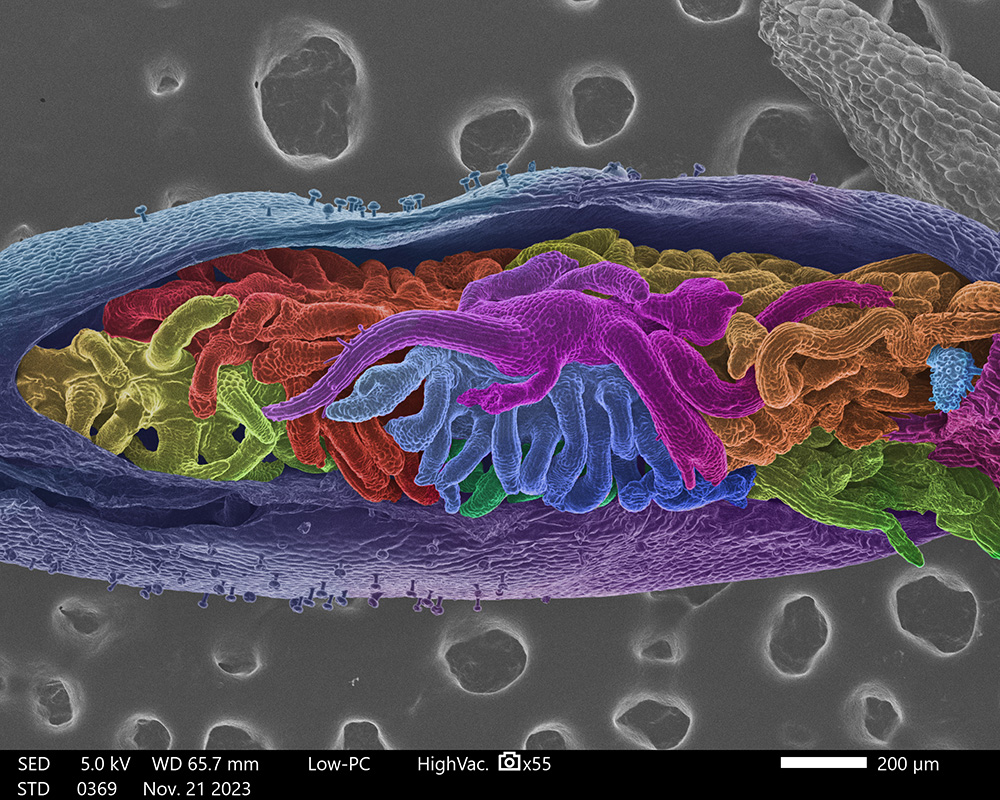
Lia Hunt won second place for an image of the Medusa Mutation in a M. guttatus seed pod, captioned, “while studying reproductive barriers between species of flowers in the genus Mimulus, the team noticed a specimen of Mimulus guttatus with unusually small seed pods. The Medusa mutation causes the ovules to develop seedless in a twisting, snake-like pattern. The team is investigating the underlying cause of this mutation, which we theorize to be a recessive polymorphism in the BEL1 promoter.”
This research allows researchers to study the mechanism by which evolution occurs and how this impacts plant populations.
“I really appreciate my image being chosen!” Hunt said. “Learning that I won felt like a huge achievement, especially because it was my first time colorizing electron microscopy. I look forward to doing it again in the future!”
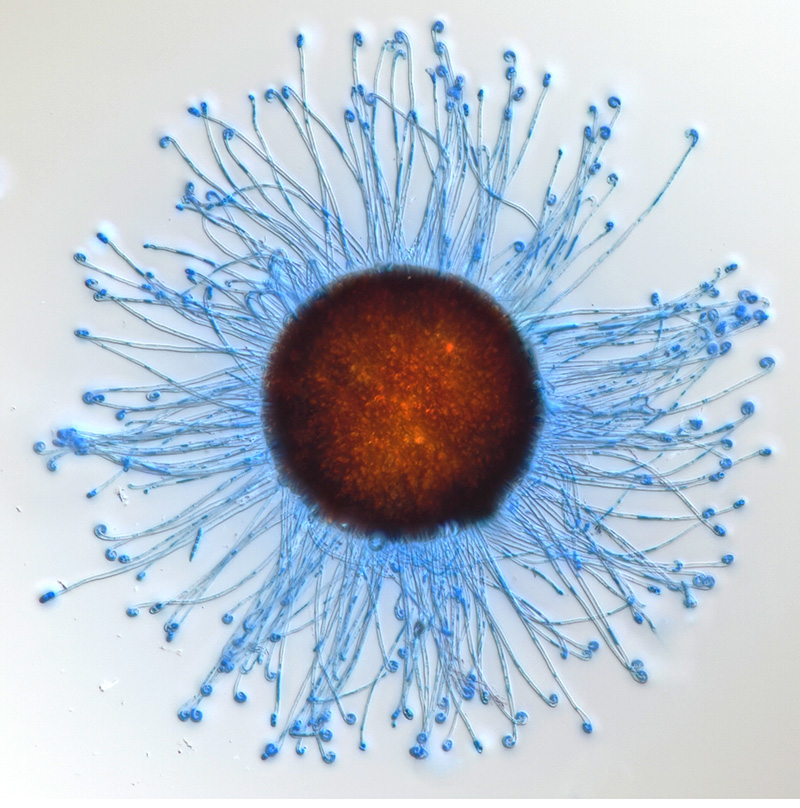
Christian Shaw, a third-year College of Sciences student, brought in an honorable mention with an image titled “Takamatsuella circinata Chasmothecium Dyed With Lactophenol Blue and Imaged Using A Compound Light Microscope” and captioned “this may look like something out of an alien movie, but it is in fact the sexual structure (called a chasmothecium) of a powdery mildew named Takamatsuella circinata. Powdery mildew is a very widespread group of plant pathogens that infect many agricultural plants, from cucumbers to broccoli to hops and more.”
This research is very important for food production, as powdery mildew greatly reduces the yield of certain crops. Studying it and increasing the knowledge of powdery mildews allows for a more informed approach to treating and protecting at-risk plants.
“This award and recognition means a lot to me as a transfer student,” Shaw said. “It shows that I have the ability to succeed and be recognized in academia for my accomplishments. I used to be extremely down on myself but this contest was a big morale boost.”
- Categories:
